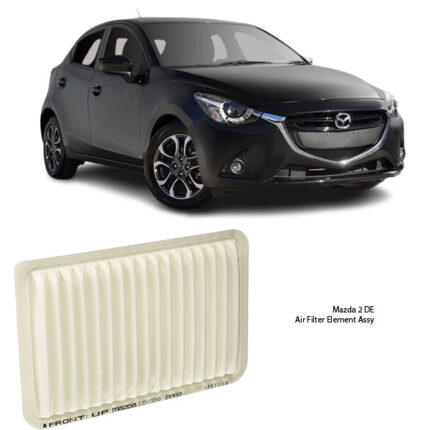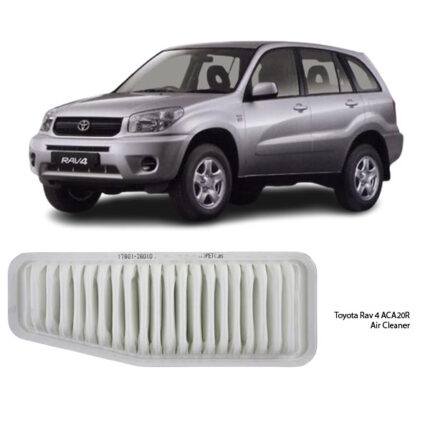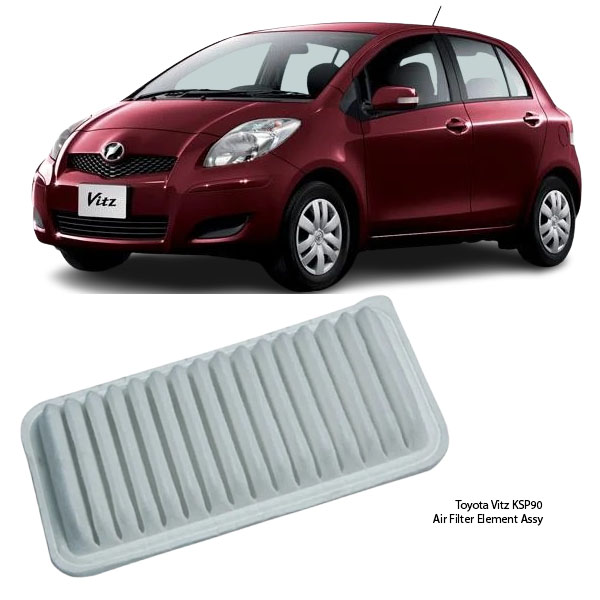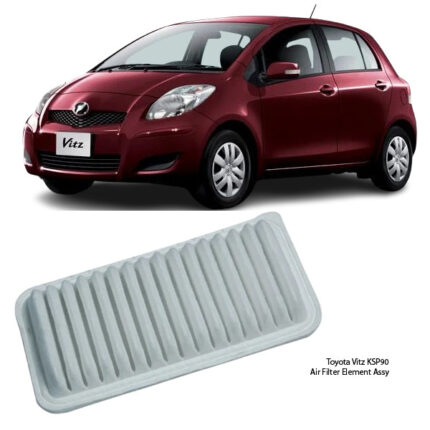Get Toyota Vitz KSP90 Air Filter Element Assy 17801-23030 in Kenya
Imagine trying to run a marathon with a stuffy nose. Doesn’t sound fun, right? You’d struggle to breathe, slow down, and tire out way too soon. The same thing happens in any high-performance system that depends on airflow. That’s why the Air Filter Element Assy is so crucial — it’s the system’s lungs, making sure every breath is clean, efficient, and optimized for peak performance.
Often overlooked, this component quietly protects everything behind it by ensuring only clean, debris-free air makes it through. It’s the first line of defense against contaminants — and when it’s doing its job right, you barely even notice it’s there.
Let’s take a deep dive into what the air filter element assembly really is, how it works, signs of trouble, and why timely replacement makes a massive difference.
What Is the Air Filter Element Assy?
The Air Filter Element Assembly is a structured filter housed inside a protective casing or box. It’s designed to clean incoming air by trapping particles like:
-
Dust
-
Pollen
-
Soot
-
Bugs
-
Micro-debris
Think of it as a finely woven sieve — strong enough to stop harmful particles, but breathable enough to let clean air flow freely through.
Most are made of pleated paper, foam, or cotton, often combined with synthetic materials to increase filtration power and lifespan. These pleats multiply the surface area, allowing it to trap more particles without choking airflow.
How It Works
Here’s the simple but brilliant process:
-
Air gets drawn in from outside through an intake.
-
The air passes through the filter element, which captures dirt, dust, and contaminants.
-
Only clean, filtered air flows through to the system’s core.
-
Clean air keeps things running efficiently — cooler, cleaner, and safer.
This continuous process happens thousands of times a minute — and any interruption, clog, or damage can start a ripple of problems.
Why It’s So Important
The Air Filter Element Assy may not seem like a big deal, but it’s protecting one of the most vital processes: air intake.
Here’s what a clean air filter does for your system:
Enhances performance – Clean air = optimal combustion = more power
Boosts fuel efficiency – Less strain, better airflow
Extends engine life – Keeps dust and dirt out of sensitive components
Protects internal parts – No abrasives in the system
Reduces emissions – Better combustion = cleaner exhaust
Improves air quality – Especially when linked to HVAC or cabin systems
It’s a small part with a huge ripple effect. Just like a healthy lung, it keeps everything else running stronger, smoother, and longer.
Signs of a Dirty or Clogged Air Filter
Air filters don’t last forever. Over time, they collect more debris than they can handle — and performance starts to drop. Here are some common warning signs:
Reduced airflow – A noticeable drop in power or responsiveness
Poor fuel efficiency – More fuel used for the same output
Unusual sounds – Whistling or wheezing from the intake
Musty or dirty smell – Especially in HVAC systems
Black smoke from the exhaust – In extreme clogging cases
Check engine light – Sometimes triggered by air sensor errors
It’s important to know these signs early — because when the filter clogs, it’s not just airflow at risk. It’s the entire system’s efficiency and longevity.
When to Replace It?
There’s no one-size-fits-all answer, but most air filters should be checked or replaced every 10,000 to 15,000 km, depending on conditions.
If you’re in:
-
Dusty environments
-
Industrial zones
-
Off-road areas
-
City traffic with lots of idling
…you’ll need to replace it more often. And if the filter is visibly dirty, it’s time. Simple as that.
How It’s Replaced
Replacing an air filter is one of the simplest, yet most impactful services. Here’s how it typically goes:
-
Open the air filter housing.
-
Remove the old, dirty filter.
-
Clean any dust from the housing.
-
Insert the new filter — same shape and size.
-
Secure the housing and close it up.
No mess, no fuss — but major performance returns. And best of all, it’s cost-effective.
OEM vs Aftermarket Filters
When choosing a replacement filter, quality matters. OEM (Original Equipment Manufacturer) filters are built to exact specifications, while aftermarket options vary widely.
OEM filters: Reliable fit, guaranteed performance
High-end aftermarket: Sometimes enhanced filtration or airflow
Cheap filters: Poor seal, low-quality material, reduced lifespan
It’s worth investing in a proper filter — it protects far more valuable parts downstream.
Maintenance Tips
Keep your air filter in top shape with these smart tips:
Inspect visually every 3–6 months
Track replacement intervals by mileage or time
Avoid driving with a missing or torn filter – unfiltered air = disaster
Clean housing area to avoid debris build-up
Consider dual filters (engine + cabin) for total air quality
Just like brushing your teeth or changing oil, replacing your air filter is part of smart maintenance. It’s simple, but it pays off in every breath your system takes.
Cool Fact: Air Filters Save More Than Just Parts
Air filters don’t just protect mechanical systems. They also help:
Reduce environmental impact – Better combustion = fewer pollutants
Filter allergens – Especially helpful in areas with lots of dust or pollen
Support sensor accuracy – Cleaner airflow means cleaner data to the ECU
So whether it’s for performance, sustainability, or even your own comfort, that filter is working harder than you think.
Conclusion: Clean Air, Clear Performance
The Air Filter Element Assy is one of those parts that quietly supports everything else. It doesn’t make noise or demand attention, but its absence — or failure — is felt everywhere.
It helps your system breathe.
It keeps dirt and damage away.
And when it’s fresh and clean, the entire machine runs stronger, smarter, and smoother.
So next time you feel a drop in performance, pause and ask:
“When was the last time I checked the air filter?”
Because clean air isn’t just about breathing easier — it’s about running better, lasting longer, and staying ready for whatever comes next.
Follow us on Facebook for more parts.




